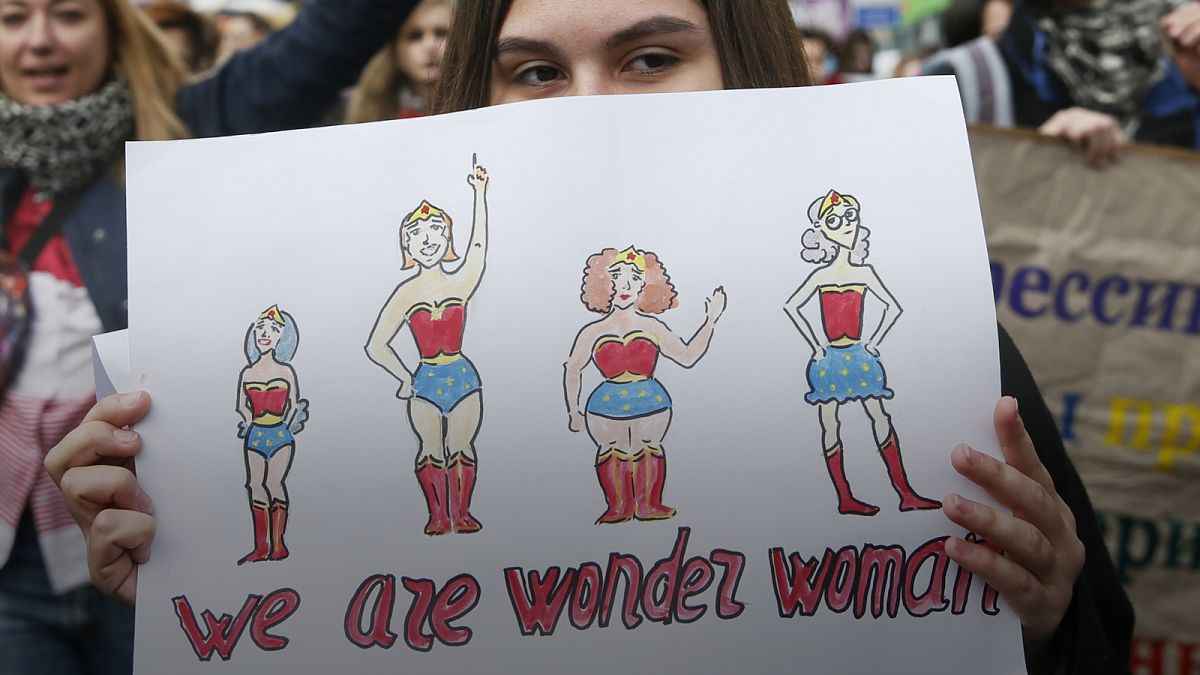Efforts to end discrimination that affects half of the European population have fallen through in a European Union dedicated to economic harmonisation.
Efforts to end discrimination that affects half of the European population have fallen through in a European Union dedicated to economic harmonisation. Without binding measures from the EU, the success of European women’s fight for gender equality depends on the commitment of individual member states. But there remains a marked difference from one country to another.
Every year, around this time, International Women’s Day attempts to cast light on the inequalities and violence that around half of the world’s population is susceptible to.
If the situation of women in the European Union has evolved and improved over recent decades, we are still not in a position to say that their status as European citizens matches that of their male counterparts. Indicators such as salary, access to education, work opportunities and representation on the public and political stages, all point to the alarming inequalities that remain between men and women. What’s more, not only is such inequality defined by gender, but also by vast differences between European women based on where they live.
Today, the harmonisation of economic and financial rules in Europe has allowed the EU to penalise a member state or company for practices deemed to discriminate against a citizen coming from another member state. Such legislation, however, does not allow the EU to intervene when it comes to a member state’s gender equality policies. In other words, the European law that obliges France to assure its foreign workers are paid an equal salary to a French national in the same job does not stretch to ensuring wage equality between men and women. Rather odd considering that gender equality is one of the founding principles of the EU!
This phenomenon can be explained quite simply by the fact that the EU can only act in areas that its members allow it to. It would seem that the member states have not been too willing to have their social policies scrutinised too closely and specifically, it would appear, when it comes to the rights of women. This leads us to the conclusion that the EU’s activity in this area has been limited to political instruments and measures but with no legally binding statutes.
The result is a lack of harmony within the EU in the fight against gender discrimination that has allowed each country to establish its own initiatives to “tackle” the problem, based on its values and the importance that it accords to the issue.
Looking directly at the figures, we can see that the average wage discrepancy within the European union was at 16.3% in 2015 – a slight drop compared to the 17% figure that was calculated in 2012. However, scratch beneath the surface and we see that this difference ranges from 5.5% in Italy to 26.9% in Estonia. It goes without saying therefore that women looking for an equivalent wage to their male compatriots should probably look to avoid the smallest of the Baltic countries.
Furthermore, before making your way to Italy in search of a the smallest gender pay gap, it is important to point out that it is here that we find the largest discrepancy between male and female unemployment levels, with 9.5% of Italian women registered as unemployed compared to 7.8% of men. That is comparable to Romania, where 8.1% of men are unemployed for 6.4% of women.
Not tempted by Italy or Romania? Fair enough. Greece? Maybe Hungary? Unfortunately both of these countries have the highest discrepancies in gender representation in politics, with no women being present in either government. On the other hand, in Sweden, Bulgaria and Slovenia, we find governments that are almost completely equal when it comes to numbers of men and women.
Compare and contrast: Trump restricts women's rights; Sweden's Isabella Lovin pushes world's most ambitious (?) climate law pic.twitter.com/1po54sDYsb
— Megan Darby (@climatemegan) February 3, 2017
These inequalities between women across member states could create a sort of Europe à la carte, with women moving based on their priorities, whether that’s finding a job, being paid an equivalent wage, having access to parental leave for themselves or their partner, access to fertility treatment and so on.
It is to be hoped that the few weeks of media coverage offered by International Women’s Day will be enough to incite the member states to get involved in a much more serious way in the fight for gender equality. If not this year, then why not next?
Article contributed by Juliette Prouteau
Sources statistiques : Eurostat & Inequality Watch
